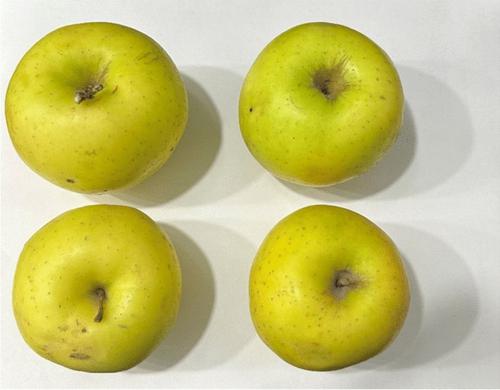Biomass Conversion and Biorefinery ( IF 4 ) Pub Date : 2024-04-15 , DOI: 10.1007/s13399-024-05562-w Tolga Kağan TEPE

|
In recent years, many innovative methods have been investigated to provide alternative approaches to the food drying industry, but currently the most widely used method is convective drying. There are difficulties in integrating innovative methods into the food industry due to cost, inapplicability to every food material, or product quality, etc. In addition, it is possible to improve the convective drying method by pre-treating of foods. Thanks to the convective drying method with increased efficiency, shorter drying processes can be achieved. This study investigates the effects of ethanol and citric acid pretreatments on the convective drying process of apple slices and the drying rate, diameter and thickness shrinkage, color properties, total phenolic content (TPC), antioxidant activity (AA), ATR-FTIR spectra, and principal component analysis (PCA) of the dried samples. The results indicate that both ethanol and citric acid pretreatments significantly enhance the drying rate and decrease drying time, with the most favorable outcomes observed for apple slices immersed in an ethanol solution for 20 min. The study employs thin-layer and artificial neural network (ANN) modeling, revealing that ANN modeling outperforms thin-layer models in predicting moisture ratio. Shrinkage ratios in diameter and thickness were observed, but no significant statistical differences are found among the sample groups. The color properties of dried apple slices are influenced by pretreatments. L* values decreased in the ethanol-pretreated samples, whereas a* and b* values increased in all samples. On the other hand, drying process leads to a decrease in TPC and AA. Ethanol pretreatments caused higher losses; lower losses were observed in the citric acid–pretreated and untreated apples slices. ATR-FTIR analysis suggests distinct spectral changes in dried samples, particularly influenced by ethanol and citric acid pretreatments. The ATR-FTIR spectra highlighted shifts in water and carbohydrate levels, proteins, fibers, organic acids, and the occurrence of Maillard reactions throughout the drying process. PCA reveals that samples dried with ethanol and citric acid share a similar plane, while fresh samples and those dried at 60 °C exhibit different arrangements.
中文翻译:

金苹果增强对流干燥:干燥特性、人工神经网络建模、质量参数的化学和 ATR-FTIR 分析
近年来,人们研究了许多创新方法,为食品干燥行业提供替代方法,但目前使用最广泛的方法是对流干燥。由于成本、不适用于每种食品原料或产品质量等原因,将创新方法整合到食品工业中存在困难。此外,可以通过食品预处理来改进对流干燥方法。由于对流干燥方法效率更高,因此可以实现更短的干燥过程。本研究研究了乙醇和柠檬酸预处理对苹果片对流干燥过程的影响以及干燥速率、直径和厚度收缩率、颜色特性、总酚含量(TPC)、抗氧化活性(AA)、ATR-FTIR光谱、以及干燥样品的主成分分析(PCA)。结果表明,乙醇和柠檬酸预处理均显着提高了干燥速率并缩短了干燥时间,其中将苹果片浸入乙醇溶液中 20 分钟观察到最有利的结果。该研究采用薄层和人工神经网络 (ANN) 建模,表明 ANN 建模在预测含水率方面优于薄层模型。观察到直径和厚度的收缩率,但样品组之间没有发现显着的统计差异。干苹果片的颜色特性受预处理的影响。经乙醇预处理的样品中L * 值下降,而所有样品中a * 和b * 值均增加。另一方面,干燥过程导致TPC和AA下降。乙醇预处理造成较高损失;在经过柠檬酸预处理和未经处理的苹果片中观察到的损失较低。 ATR-FTIR 分析表明干燥样品中存在明显的光谱变化,特别是受到乙醇和柠檬酸预处理的影响。 ATR-FTIR 光谱突出显示了整个干燥过程中水和碳水化合物水平、蛋白质、纤维、有机酸的变化以及美拉德反应的发生。 PCA 显示,用乙醇和柠檬酸干燥的样品具有相似的平面,而新鲜样品和 60 °C 干燥的样品则表现出不同的排列。



























 京公网安备 11010802027423号
京公网安备 11010802027423号